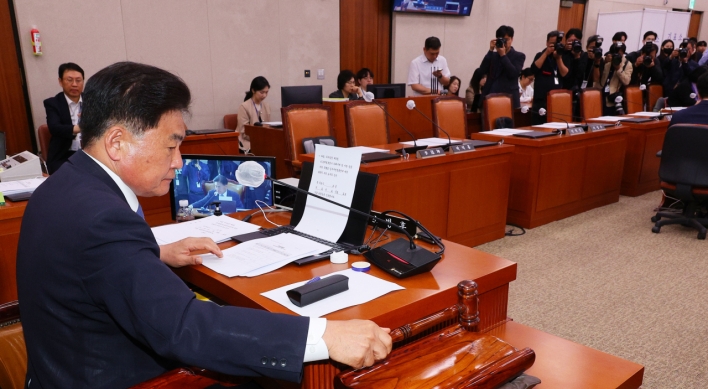The Fifth Plenary Session of the 17th Communist Party of China (CPC) Central Committee, held in mid-October, put forward a proposal for the 12th Five-Year Plan for national economic and social development over the next five years, once again highlighting the importance of transforming the country’s economic development mode. It also called for governments at various levels to shift their economic focus to this task.
The transformation of a country’s development mode becomes unavoidable when the previous development mode is no longer suitable to changing conditions. As a result, market participants are motivated to directly respond to the new market signals and strive to promote economic restructuring.
With the coming of the Lewis Turning Point, when surplus labor disappears and wages and inflation rise, the shortages in China’s production resources are expected to become increasingly obvious, which will inevitably cause domestic enterprises, investors and employers to change their established production and development models in order to accommodate the changing market and price conditions.
China is likely to encounter a series of new challenges in its bid to transform its economic development mode, which, if not properly handled, will undermine sustainable growth and plunge the country into the “middle income trap.”
Latin America gave us a strong lesson on this issue. Many countries in Latin America, by capitalizing on their advantages of cheap labor and raw materials, managed to absorb a large volume of foreign capital during the 20th century, greatly boosting their economic development. However, after becoming middle-income countries, these economies quickly came to a standstill or regressed. The huge gap between the rich and poor triggered the outbreak of a large number of social problems, and even social turmoil in some countries.
Whether China can improve production efficiency so it becomes the main driver of economic growth, replacing the simple quantitative input of labor and capital, is one of the country’s main challenges.
China has failed to successfully transform its economic development mode over the past years partly because of its sufficient supply of low-cost labor. This demographic dividend made it possible for China to maintain rapid economic growth through the input of productive resources alone.
However, as the supply of low-cost labor declines and capital becomes increasingly abundant, China should turn to production efficiency as the main means of promoting sustainable economic growth.
Whether China can improve the quality of its labor force, to replace its long-held quantitative advantage, will also be a key factor in successfully transforming its economic development mode. The current labor shortage plaguing many of China’s regions, especially the developed coastal regions, highlights the urgent need to improve the quality of the workforce to facilitate the much-needed industrial upgrading.
The coming of the Lewis Turning Point is expected to bring a 10 percent year-on-year rise in ordinary wages, which will help improve the country’s income distribution to some extent, but will also make some parents, especially those in rural areas, feel it is unnecessary to let their children go to school. Instead, some parents might choose to let their children give up education and find a job as early as possible. This practice, if it becomes widespread, will result in the inability of the country’s next-generation labor to adapt to the needs of unavoidable economic restructuring and industrial structural upgrading.
How to form a normal wage negotiating mechanism through the establishment of an institutionalized labor market instead of just supply and demand will be another big challenge in China’s endeavor to transform its economic development mode. Unlike other commodities, the price of labor should not be decided by supply-demand relations alone. After a country’s economic development reaches a certain stage, wages should be determined by both supply and demand and an institutionalized labor market.
The experience of foreign countries also indicates that after a country reaches a middle-income level and the Lewis Turning Point it is important to properly respond to people’s calls for wage rises in order to promote social stability, improve the distribution of social wealth and expand consumption.
By Cai Fang
Cai Fang is director with the Institute of Population and Labor Economics under the Chinese Academy of Social Sciences. The article was first carried in the Comparative Studies magazine. ― Ed.
(China Daily)
(Asia News Network)
The transformation of a country’s development mode becomes unavoidable when the previous development mode is no longer suitable to changing conditions. As a result, market participants are motivated to directly respond to the new market signals and strive to promote economic restructuring.
With the coming of the Lewis Turning Point, when surplus labor disappears and wages and inflation rise, the shortages in China’s production resources are expected to become increasingly obvious, which will inevitably cause domestic enterprises, investors and employers to change their established production and development models in order to accommodate the changing market and price conditions.
China is likely to encounter a series of new challenges in its bid to transform its economic development mode, which, if not properly handled, will undermine sustainable growth and plunge the country into the “middle income trap.”
Latin America gave us a strong lesson on this issue. Many countries in Latin America, by capitalizing on their advantages of cheap labor and raw materials, managed to absorb a large volume of foreign capital during the 20th century, greatly boosting their economic development. However, after becoming middle-income countries, these economies quickly came to a standstill or regressed. The huge gap between the rich and poor triggered the outbreak of a large number of social problems, and even social turmoil in some countries.
Whether China can improve production efficiency so it becomes the main driver of economic growth, replacing the simple quantitative input of labor and capital, is one of the country’s main challenges.
China has failed to successfully transform its economic development mode over the past years partly because of its sufficient supply of low-cost labor. This demographic dividend made it possible for China to maintain rapid economic growth through the input of productive resources alone.
However, as the supply of low-cost labor declines and capital becomes increasingly abundant, China should turn to production efficiency as the main means of promoting sustainable economic growth.
Whether China can improve the quality of its labor force, to replace its long-held quantitative advantage, will also be a key factor in successfully transforming its economic development mode. The current labor shortage plaguing many of China’s regions, especially the developed coastal regions, highlights the urgent need to improve the quality of the workforce to facilitate the much-needed industrial upgrading.
The coming of the Lewis Turning Point is expected to bring a 10 percent year-on-year rise in ordinary wages, which will help improve the country’s income distribution to some extent, but will also make some parents, especially those in rural areas, feel it is unnecessary to let their children go to school. Instead, some parents might choose to let their children give up education and find a job as early as possible. This practice, if it becomes widespread, will result in the inability of the country’s next-generation labor to adapt to the needs of unavoidable economic restructuring and industrial structural upgrading.
How to form a normal wage negotiating mechanism through the establishment of an institutionalized labor market instead of just supply and demand will be another big challenge in China’s endeavor to transform its economic development mode. Unlike other commodities, the price of labor should not be decided by supply-demand relations alone. After a country’s economic development reaches a certain stage, wages should be determined by both supply and demand and an institutionalized labor market.
The experience of foreign countries also indicates that after a country reaches a middle-income level and the Lewis Turning Point it is important to properly respond to people’s calls for wage rises in order to promote social stability, improve the distribution of social wealth and expand consumption.
By Cai Fang
Cai Fang is director with the Institute of Population and Labor Economics under the Chinese Academy of Social Sciences. The article was first carried in the Comparative Studies magazine. ― Ed.
(China Daily)
(Asia News Network)










![[Kim Seong-kon] Democracy and the future of South Korea](http://res.heraldm.com/phpwas/restmb_idxmake.php?idx=644&simg=/content/image/2024/04/16/20240416050802_0.jpg&u=)





![[KH Explains] Hyundai's full hybrid edge to pay off in slow EV transition](http://res.heraldm.com/phpwas/restmb_idxmake.php?idx=652&simg=/content/image/2024/04/18/20240418050645_0.jpg&u=20240418155304)

![[Today’s K-pop] Zico drops snippet of collaboration with Jennie](http://res.heraldm.com/phpwas/restmb_idxmake.php?idx=642&simg=/content/image/2024/04/18/20240418050702_0.jpg&u=)